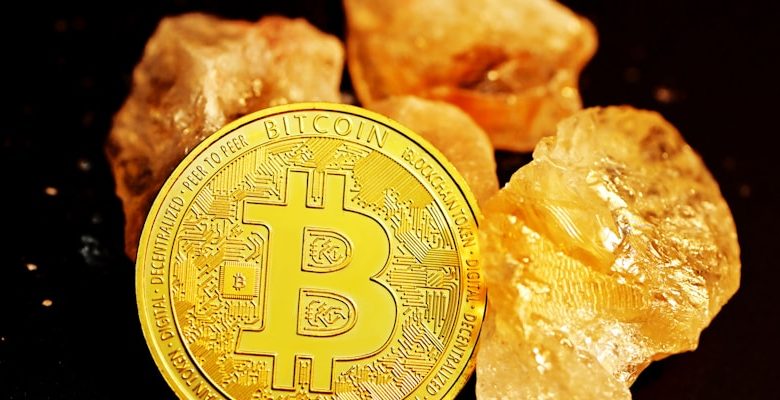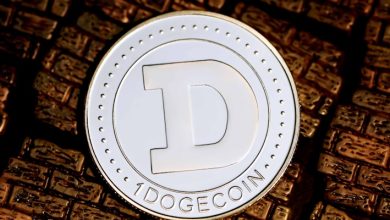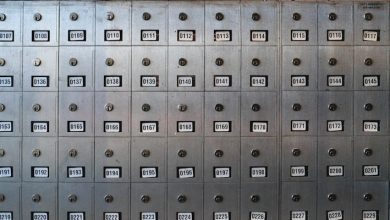The Role of Mining in Cryptocurrency Networks: A Beginner’s Guide

- The Basics of Cryptocurrency Mining
- How Mining Secures Cryptocurrency Networks
- The Process of Mining Cryptocurrencies
- Popular Mining Algorithms in the Cryptocurrency World
- Challenges and Risks of Cryptocurrency Mining
- Tips for Getting Started with Cryptocurrency Mining
The Basics of Cryptocurrency Mining
Cryptocurrency mining is a process where transactions are verified and added to a public ledger known as the blockchain. Miners play a crucial role in maintaining the security and integrity of the cryptocurrency network. Here are the basics of cryptocurrency mining:
- Computational Power: Miners use powerful computers to solve complex mathematical puzzles in order to validate transactions. The first miner to solve the puzzle gets the opportunity to add a new block to the blockchain and is rewarded with newly minted coins.
- Mining Pools: Due to the high level of competition in mining, many miners join mining pools where they combine their computational power to increase their chances of earning rewards. Rewards are then distributed among pool members based on their contribution.
- Proof of Work: Most cryptocurrencies use a consensus mechanism called Proof of Work (PoW) where miners compete to solve cryptographic puzzles. This process requires a significant amount of computational power and energy consumption.
- Halving: Some cryptocurrencies have a halving mechanism built into their protocol, which reduces the block rewards that miners receive by half after a certain number of blocks are mined. This is done to control inflation and ensure the scarcity of the cryptocurrency.
In conclusion, cryptocurrency mining is a competitive and energy-intensive process that is essential for the functioning of cryptocurrency networks. Miners play a vital role in securing the network and validating transactions, and they are rewarded for their efforts with newly minted coins. Understanding the basics of cryptocurrency mining is crucial for anyone looking to get involved in the world of cryptocurrencies.
How Mining Secures Cryptocurrency Networks
Mining plays a crucial role in securing cryptocurrency networks. Miners are responsible for verifying transactions and adding them to the blockchain, which is a decentralized ledger that records all transactions across the network.
When a transaction is made, it is broadcast to the network and grouped with other transactions into a block. Miners then compete to solve a complex mathematical puzzle based on the transactions in the block. The first miner to solve the puzzle gets to add the block to the blockchain and is rewarded with newly minted coins and transaction fees.
This process, known as proof of work, ensures the security and integrity of the network. By requiring miners to invest computational power and energy into solving the puzzle, it becomes economically and technically infeasible for malicious actors to alter the blockchain. This makes the network resistant to fraud and censorship.
The Process of Mining Cryptocurrencies
Mining cryptocurrencies is the process of validating transactions on a blockchain network by solving complex mathematical problems. Miners use powerful computers to compete against each other in a race to solve these puzzles and add new blocks to the blockchain. This process requires a significant amount of computational power and energy.
When a miner successfully solves a problem, they are rewarded with newly minted coins as well as transaction fees. This incentivizes miners to continue participating in the network and helps to secure the blockchain against fraudulent activities.
One key aspect of mining is the concept of proof-of-work, which is used by many cryptocurrencies such as Bitcoin. Proof-of-work requires miners to show proof that they have performed a certain amount of computational work in order to validate a block of transactions. This helps to prevent spam and ensures that the network remains secure.
Overall, mining plays a crucial role in the operation of cryptocurrency networks. It helps to validate transactions, secure the network, and incentivize participants to contribute their computational resources. As the popularity of cryptocurrencies continues to grow, mining will remain a vital part of the ecosystem.
Popular Mining Algorithms in the Cryptocurrency World
In the world of cryptocurrency, there are several popular mining algorithms that play a crucial role in securing the network and validating transactions. These algorithms are designed to ensure the integrity and security of the blockchain, making them essential components of any cryptocurrency network.
One of the most widely used mining algorithms is Proof of Work (PoW), which requires miners to solve complex mathematical puzzles in order to validate transactions and create new blocks. This process is energy-intensive and requires powerful hardware, but it has been proven to be effective in preventing double-spending and other fraudulent activities.
Another popular mining algorithm is Proof of Stake (PoS), which works on a different principle than PoW. In a PoS system, validators are chosen to create new blocks based on the number of coins they hold. This means that the more coins a validator has, the more likely they are to be chosen to create a new block. PoS is seen as a more energy-efficient alternative to PoW, as it does not require miners to solve complex puzzles.
Other notable mining algorithms include Directed Acyclic Graph (DAG), which is used by cryptocurrencies like IOTA, and X11, which is used by Dash. Each of these algorithms has its own unique features and characteristics, but they all serve the same purpose of securing the network and validating transactions.
Overall, mining algorithms are an essential part of the cryptocurrency ecosystem, as they help to maintain the integrity and security of the network. By understanding the various mining algorithms and how they work, beginners can gain a better understanding of how cryptocurrencies are created and maintained.
Challenges and Risks of Cryptocurrency Mining
Cryptocurrency mining comes with its fair share of challenges and risks that miners need to be aware of. One of the main challenges is the high energy consumption associated with mining activities. The process of validating transactions and adding them to the blockchain requires significant computational power, which in turn consumes a large amount of electricity. This can lead to high operating costs for miners, especially in regions where electricity prices are high.
Another risk of cryptocurrency mining is the potential for hardware failure. Miners rely on specialized equipment such as ASICs or GPUs to perform the complex calculations required for mining. These devices can be prone to overheating and other technical issues, which can result in downtime and lost mining opportunities. Additionally, the rapid pace of technological advancement means that mining hardware can quickly become outdated, requiring miners to constantly upgrade their equipment to stay competitive.
Security is also a major concern in the world of cryptocurrency mining. Malicious actors may attempt to hack into mining operations to steal funds or disrupt the network. Miners need to take precautions to protect their wallets, private keys, and other sensitive information from cyber threats. Additionally, the decentralized nature of blockchain networks means that there is no central authority to turn to in case of a security breach, so miners need to be proactive in safeguarding their assets.
Lastly, regulatory uncertainty poses a significant risk to cryptocurrency mining activities. Governments around the world are still grappling with how to regulate the use of cryptocurrencies, which can create legal challenges for miners. Some countries have imposed restrictions or outright bans on mining operations, while others have introduced licensing requirements or tax obligations. Miners need to stay informed about the evolving regulatory landscape to ensure compliance with the law and avoid potential legal issues.
Tips for Getting Started with Cryptocurrency Mining
When starting with cryptocurrency mining, it is important to first research and understand the process. Here are some tips to help you get started:
- Choose the right cryptocurrency to mine based on factors such as profitability and personal interest.
- Invest in the right hardware, such as a powerful graphics processing unit (GPU) or application-specific integrated circuit (ASIC) miner.
- Join a mining pool to increase your chances of earning rewards consistently.
- Download and set up mining software that is compatible with your hardware and chosen cryptocurrency.
- Ensure your mining rig has proper cooling and ventilation to prevent overheating.
- Monitor your mining operation regularly to optimize performance and troubleshoot any issues that may arise.
By following these tips, you can start your cryptocurrency mining journey on the right foot and increase your chances of success in this competitive field.



